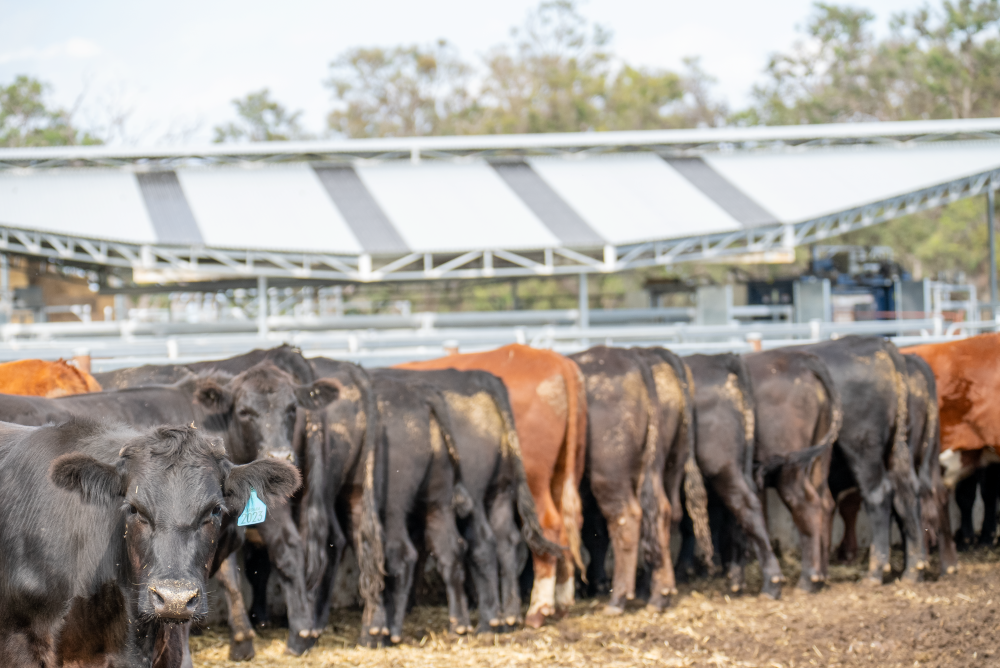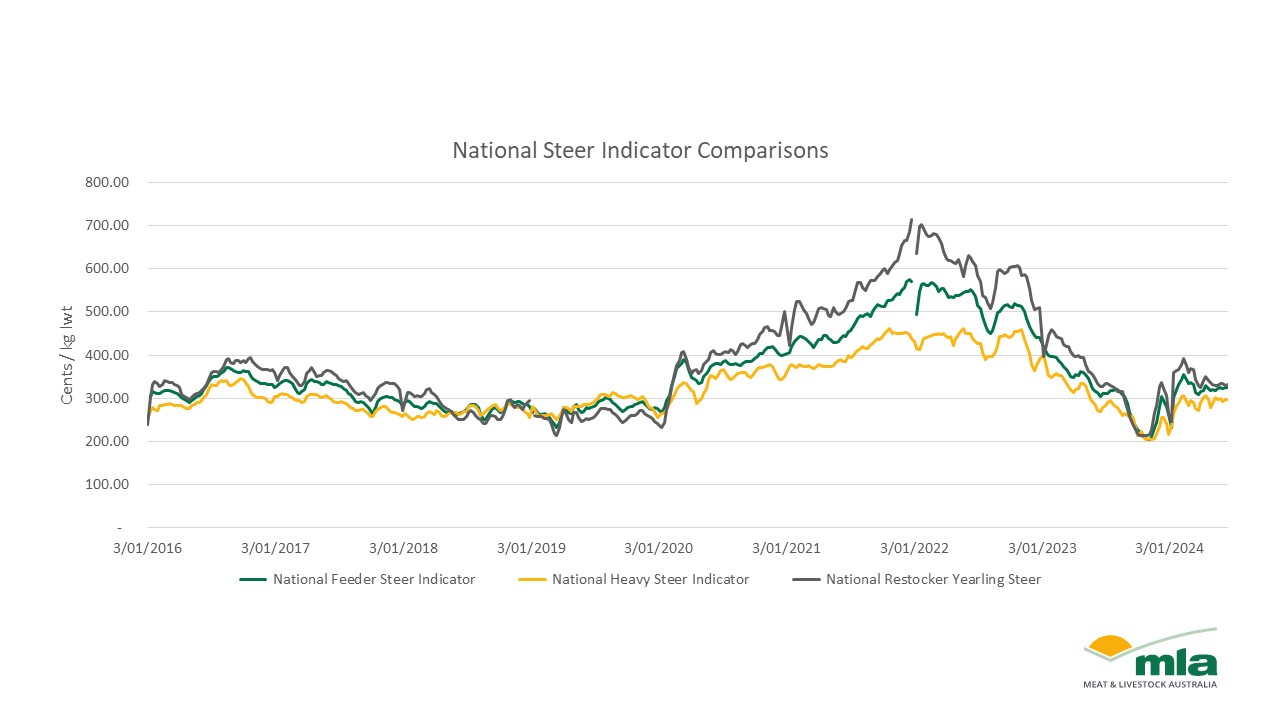The Australian Beef Market in 2025: An Absolute Cracker
In this column in July, the StoneX H2 2025 Australian Cattle & Beef Market Outlook’s bold calls were analysed and assessed for what the final 6...

For the past three months, prices for all steer indicators – the Restocker Steer Indicator, Feeder Steer Indicator and Heavy Steer Indicator – have been operating along the lines of long-term market trends, remaining relatively flat in comparison to the volatility seen over the last three years.
For the past three months, prices for all steer indicators – the Restocker Steer Indicator, Feeder Steer Indicator and Heavy Steer Indicator – have been operating along the lines of long-term market trends, remaining relatively flat in comparison to the volatility seen over the last three years.
Current national prices as of 13 June 2024 stand at:
Producer sentiment and confidence in the market help to drive variation in steer indicator pricing. Confidence in the conditions to add weight and value to an animal as it moves from a restocker to a lot feeder to a processor as a heavy steer heavily influences value and demand.
The cattle market saw unprecedented price premiums across 2021 and 2022 through the peak of the rebuild. While cattle prices lifted across the board, restocking demand drove a market lift. This led to premiums for restocker animals, which were as high as 152¢ (22%) over feeder steers, and a 139¢ premium (25%), for feeders over heavy steers. This provides a good narrative of the journey and price inputs that go into producing a lot fed finished product during this time.
In October 2023, MLA reported a convergence of the prices between the steer indicators, reaching only an 8¢ difference between the three price points. The price convergence reflected the confidence in the market at the time and the perceived inability to value add either in feed or market conditions.

As of 13 June, the market has returned to long-term relationship dynamics, after peaking in the first weeks of sales this year and levelling out from March. Generally, in periods of neutral or positive operating conditions, restocker steers will receive a premium over feeder steers, who, in turn, receive a premium over heavy steers.
In the past three months, there have been price differentials between restockers and feeders of 5%, close to the averages between 2016–18 of 4%. Similarly, between feeders and heavy steers, current short term at 4% are running close to the 2016–18 averages of 7%.
.jpg)
In this column in July, the StoneX H2 2025 Australian Cattle & Beef Market Outlook’s bold calls were analysed and assessed for what the final 6...
.png)
Each December we save the last article of the year for a bit of a crystal ball gaze, as we try to bring together market fundamentals and work out...
.png)
Australia’s wool market posted another strong performance this week, with all micron categories attracting solid support across the three selling...